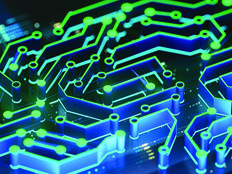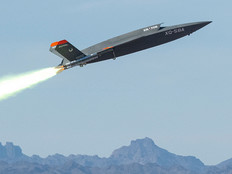Why IoT Data Needs Context
Discussions about the Internet of Things often focus on the billions of devices that are or will be connected to the Internet.
But what about all the data being generated from those connected devices and sensors used by retailers, law enforcement and government? How is that data safeguarded, and in what context is it used? Is a data-based assertion made in one context still valid in a separate context?
Context is key to understanding when data is and is not useful, Dan Doney, chief innovation officer for the Defense Intelligence Agency, said at the Nextgov Prime conference in Washington, D.C., on Tuesday.
“The data in context is very useful. Data outside of context is dangerous,” said Doney. Unfortunately, “we are not in a good place in terms of understanding the value of information in context.”
The Sept. 11 terrorist attacks are a tragic example of that pitfall, he said. There was available data, but the government could not match it to a specific context in order to make an assessment.
On the flip side, there are also security concerns about who has access to what data. “Do we have a need to share, or do we have a need to lock down and protect? The problem is, we’re not advancing the understanding of information in context fast enough,” Doney added.
The Defense Department and the Office of the Director of National Intelligence are working through how best to reconcile any differences between two major initiatives to secure and share more information and consolidate IT assets.
“How do we ensure that you can develop once and run anywhere?” asked David Mihelcic, chief technology officer at the Defense Information Systems Agency. That’s true for data that resides on multiple clouds in the Intelligence Community Information Technology Enterprise or DOD’s Joint Information Environment, according to Mihelcic, who spoke alongside Doney.
Sensors on the Battlefield
For Mihelcic, the Internet of Everything is a huge opportunity.
“Every soldier is a sensor,” he said. “Every soldier is thousands of sensors, potentially, and the ability to take that data and do something useful and interesting, something unanticipated with it, is a huge topic of focus for both the Department of Defense and the intelligence community.”
Outfitting soldiers with sensors and cameras is part of the world the modern soldier must live in, Mihelcic said in response to questions about how that generated data will be used and if it could be used against the soldier who created it. Sensors are everywhere, he explained. Most people have cameras in their pockets, and “we are constantly under surveillance.”
“I don’t think we can put the genie back in the bottle,” he noted. “I don’t think I’m going to get anybody here to take their iPhone and throw it in a shredder at the end of this discussion.”
Mihelcic said there are strict rules that govern how camera data for official purposes can be used. In some cases, data will be used for legal, intelligence and tactical purposes. “Our focus as we move forward in the IoT is, how do we maintain an individual’s right to privacy and organizational security?”









